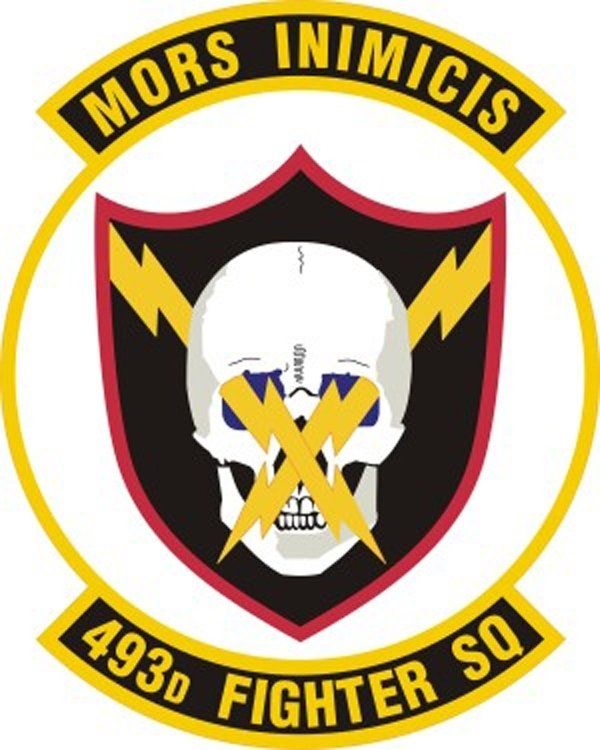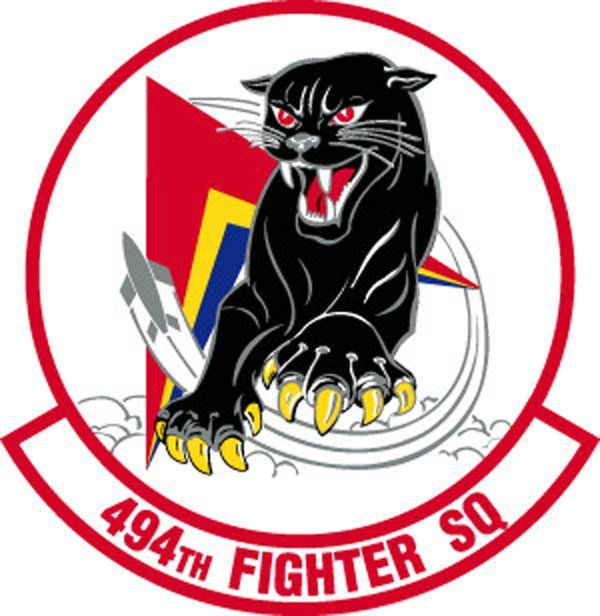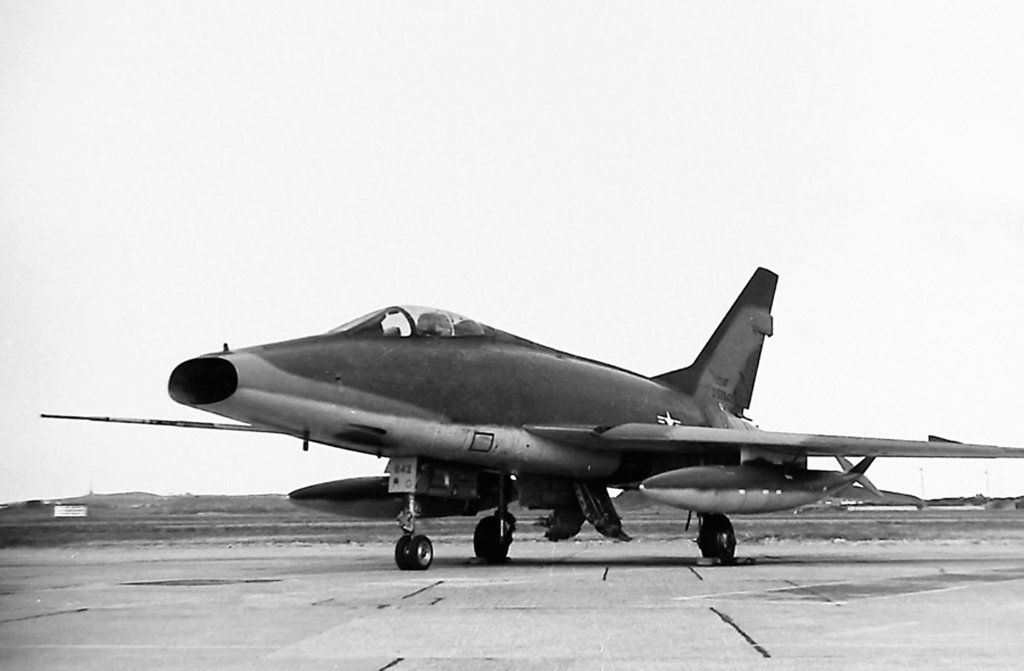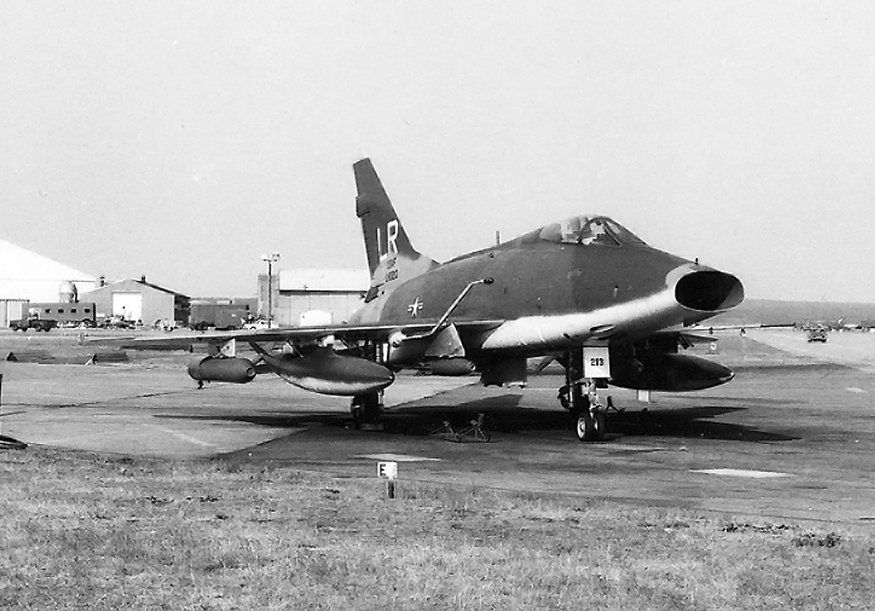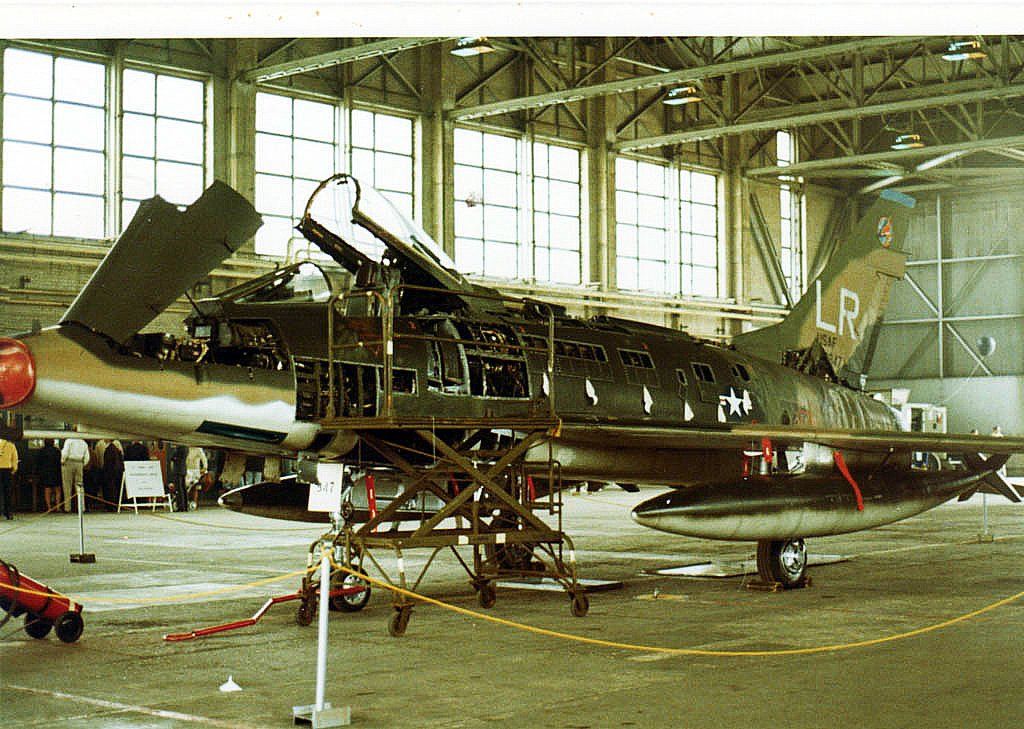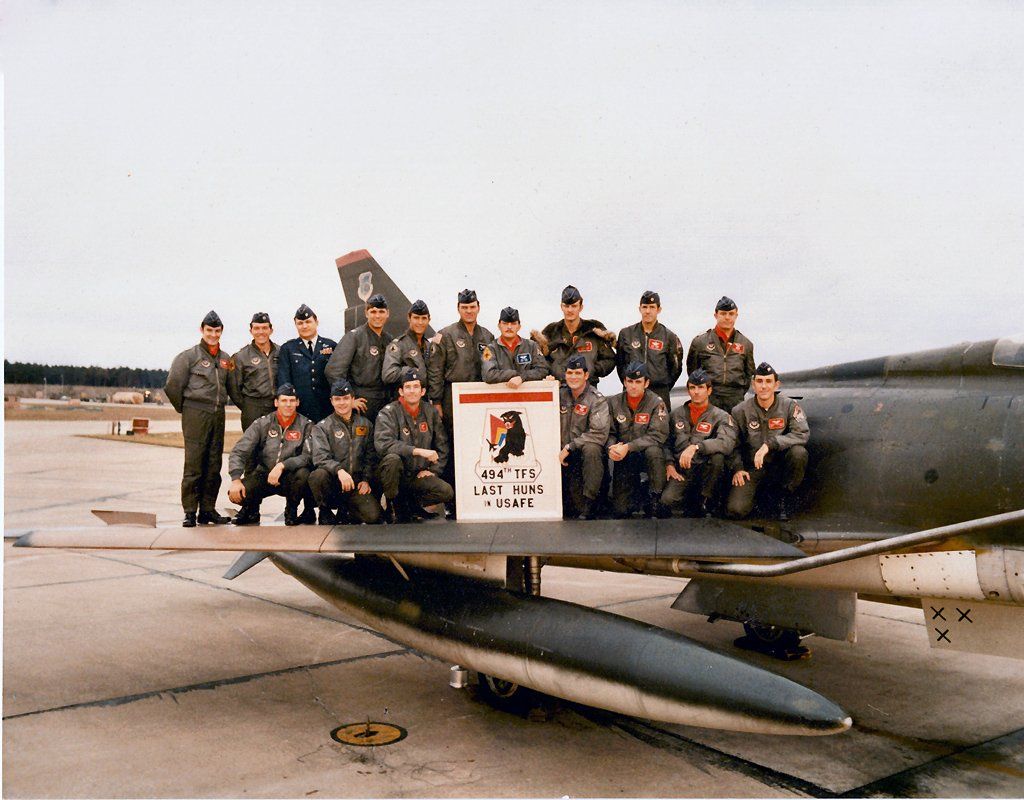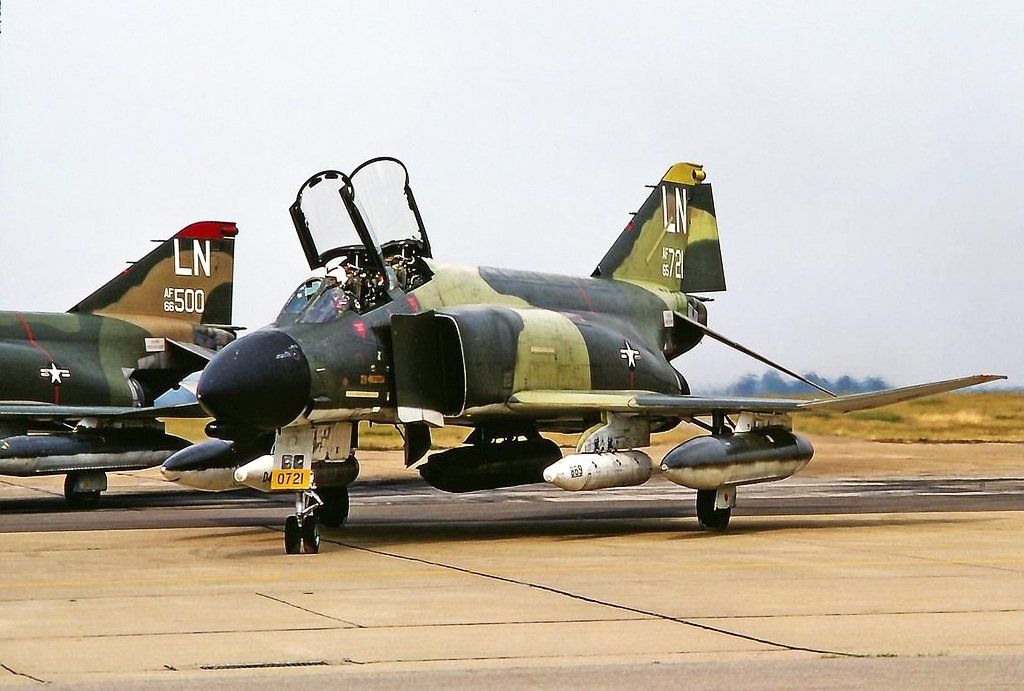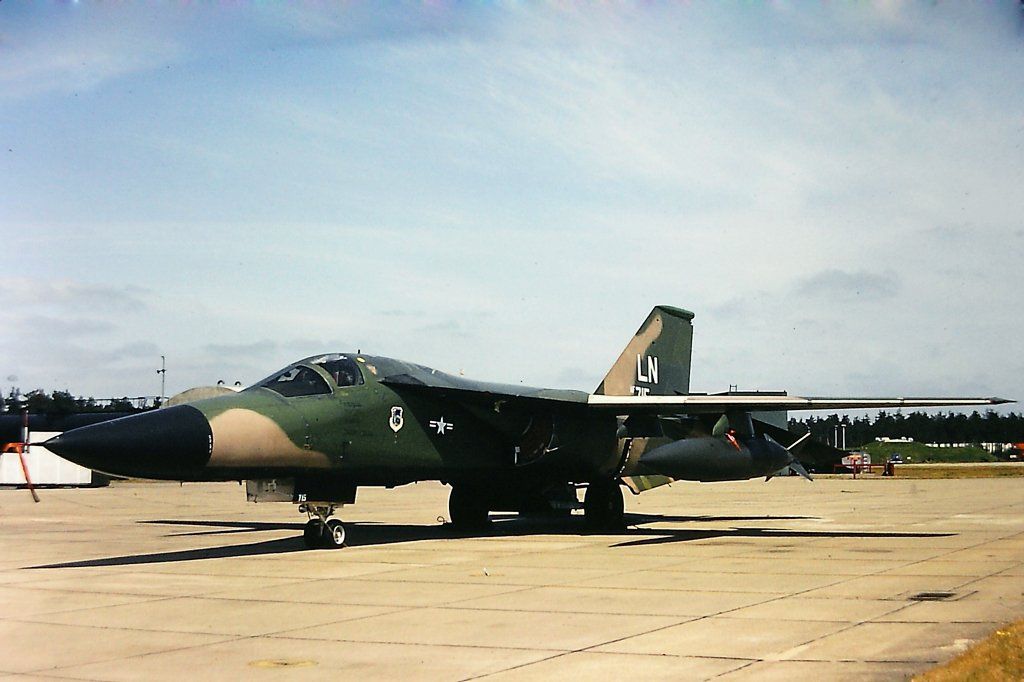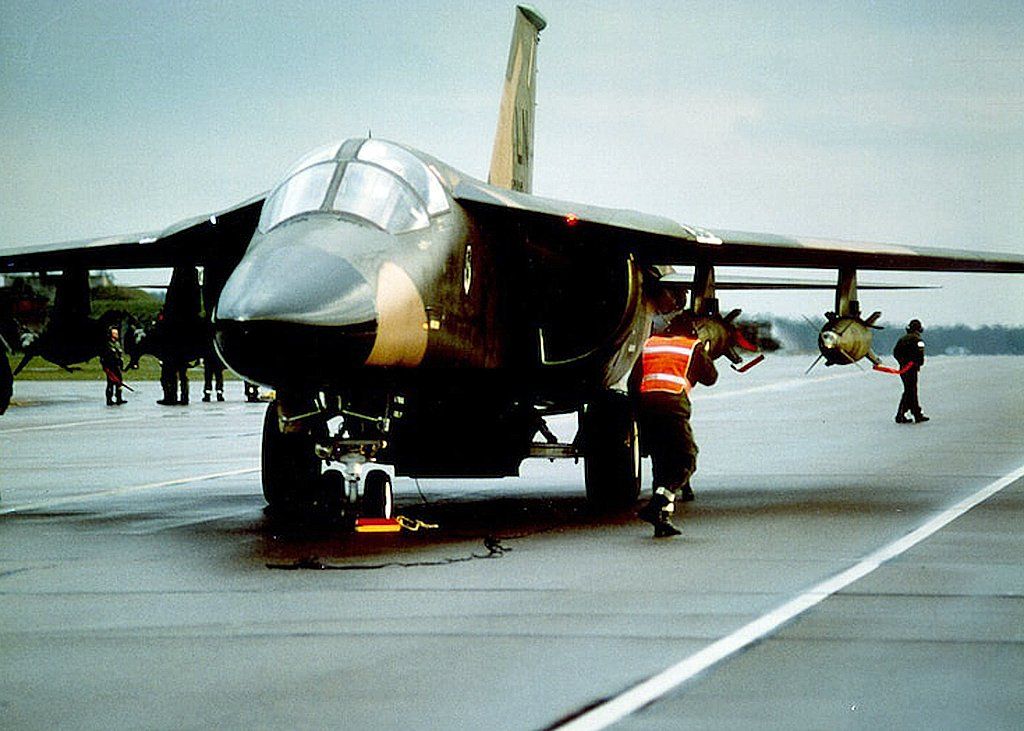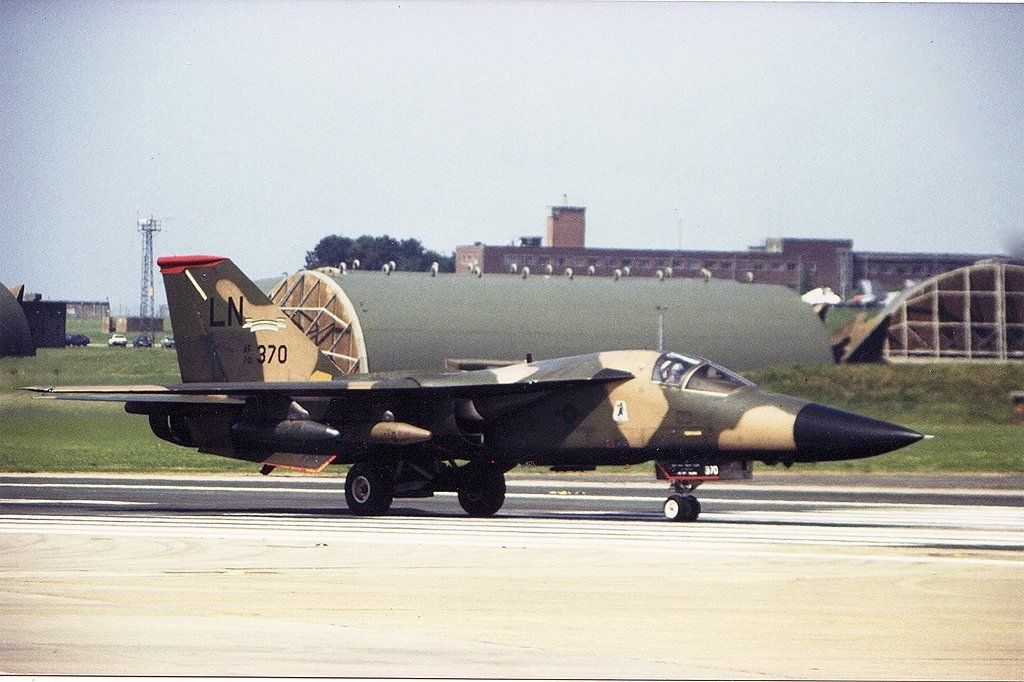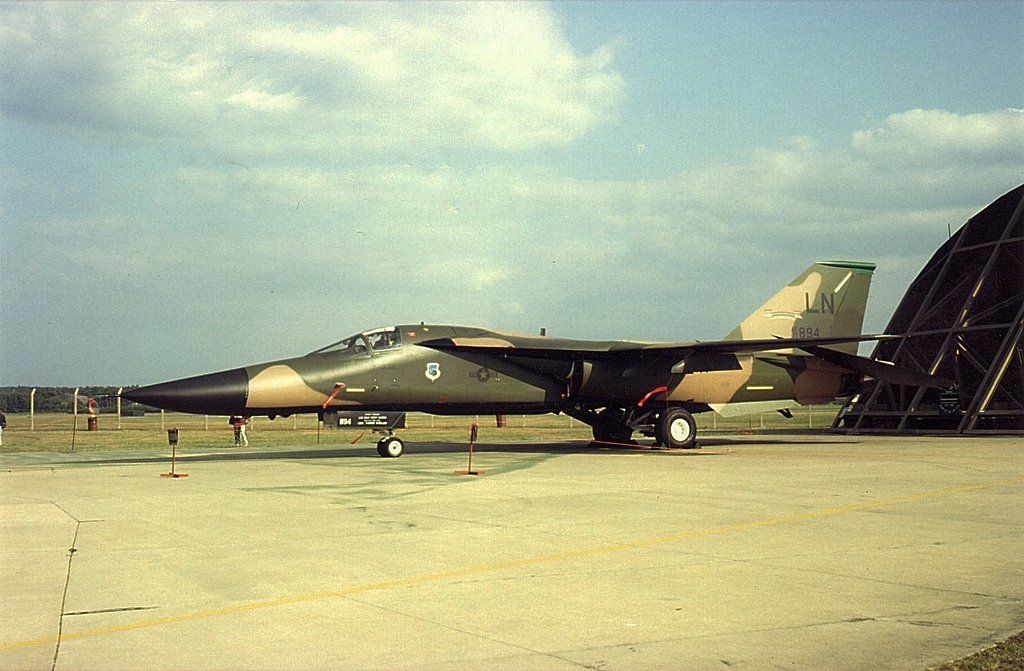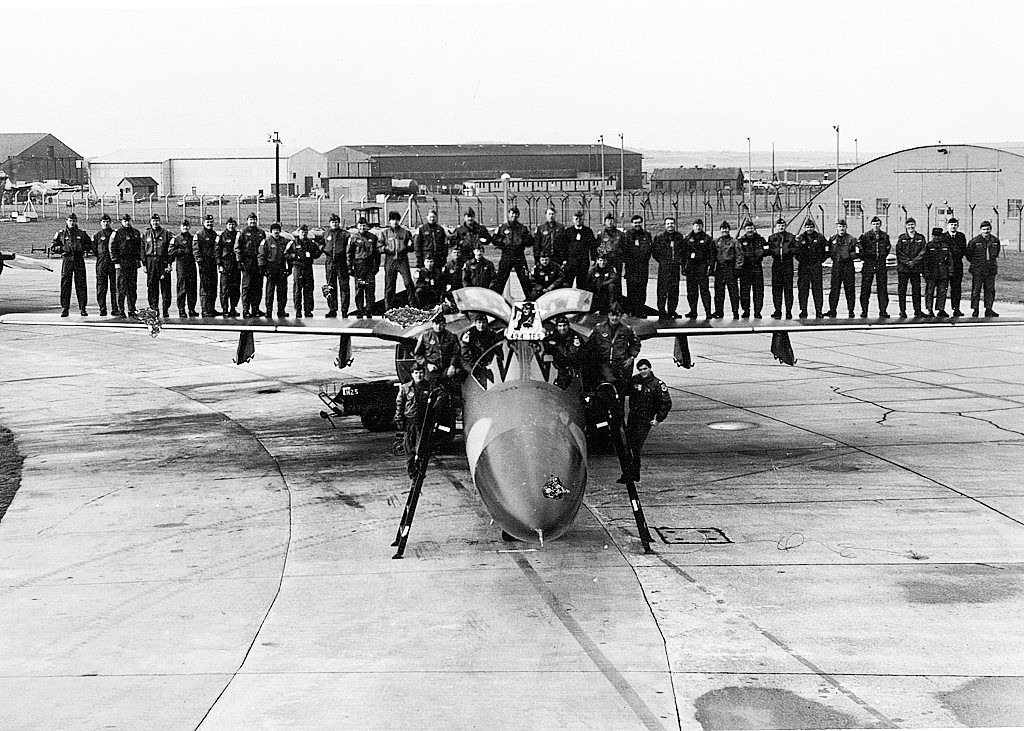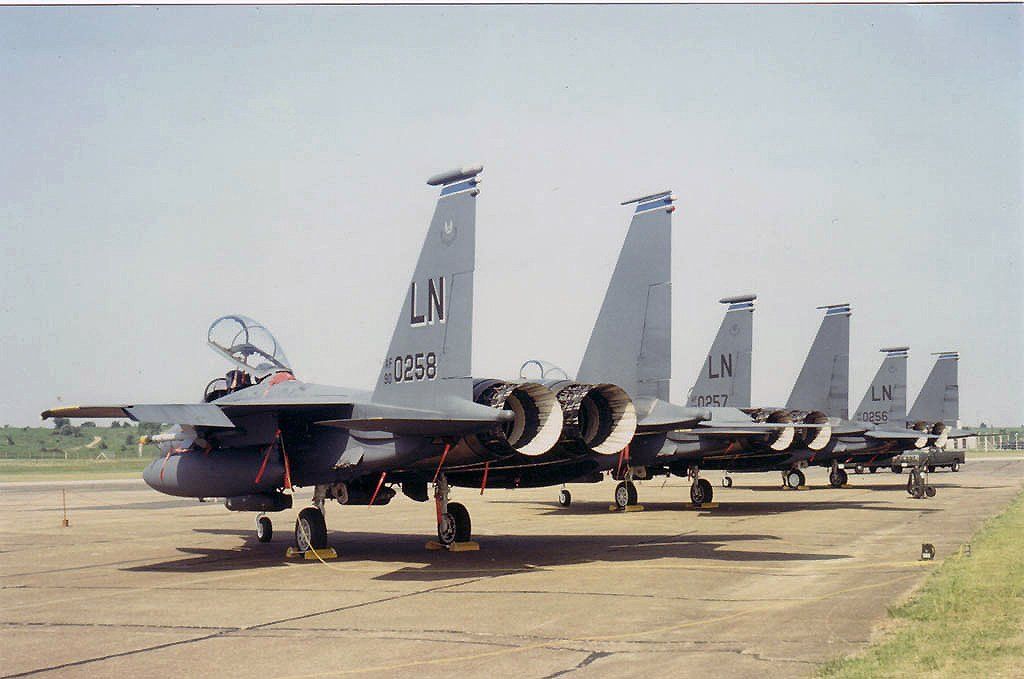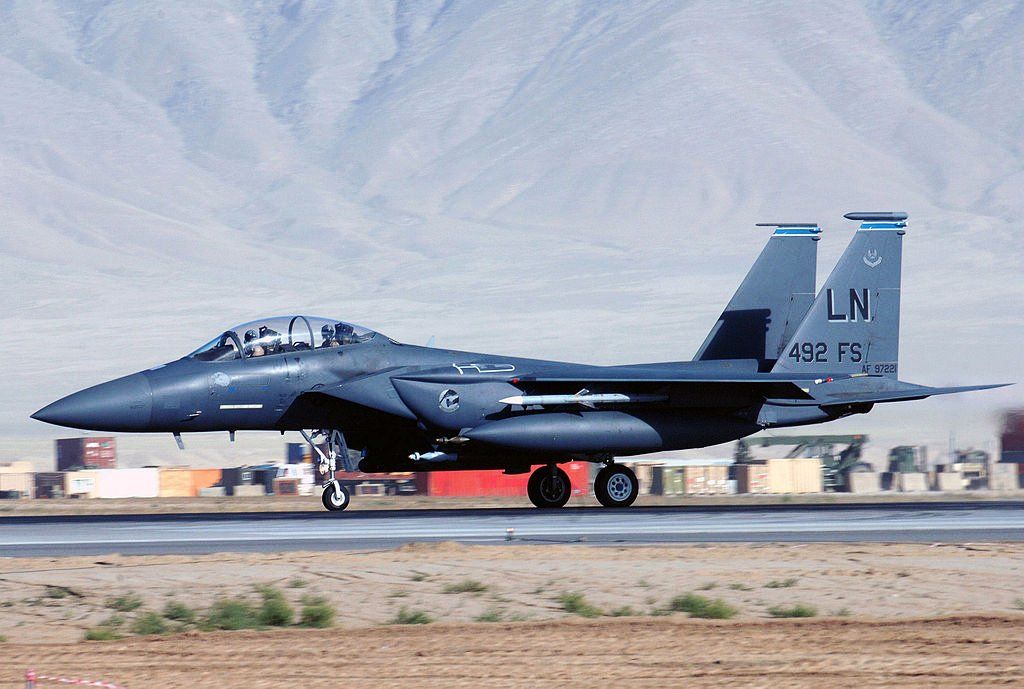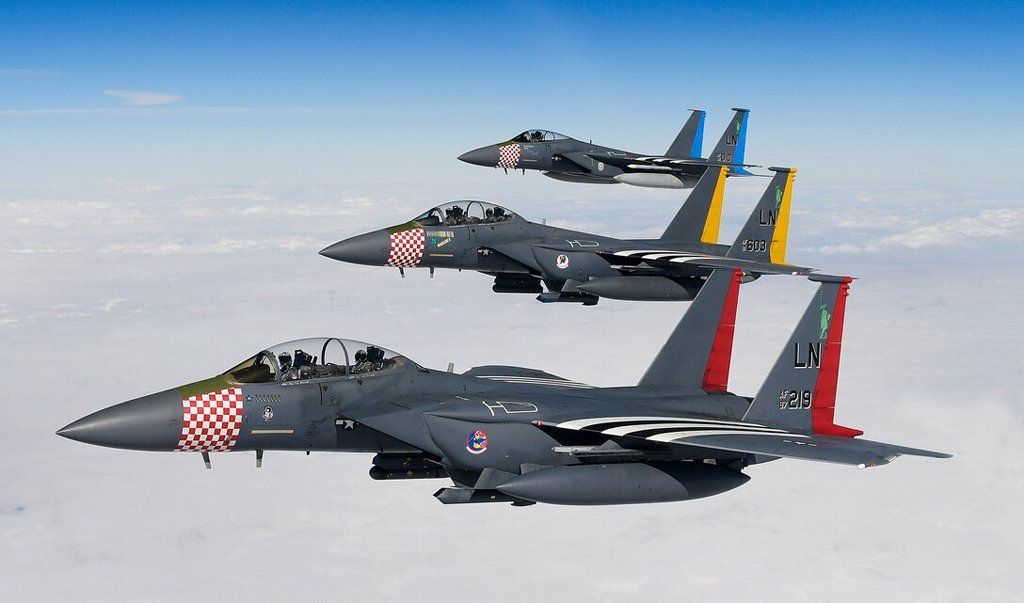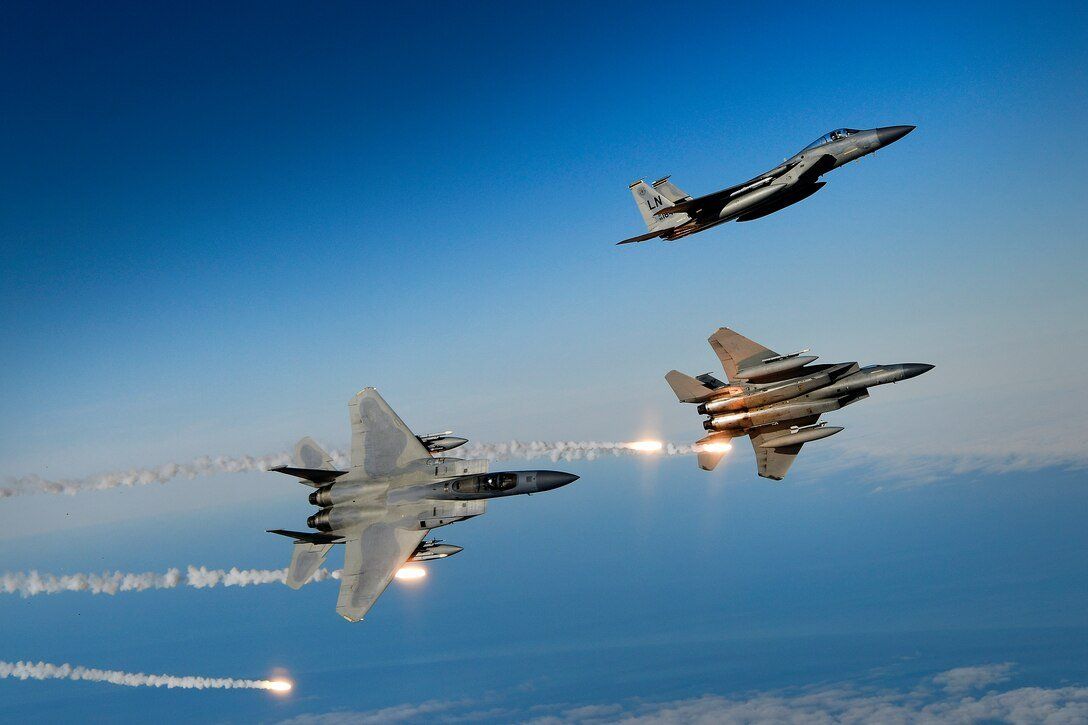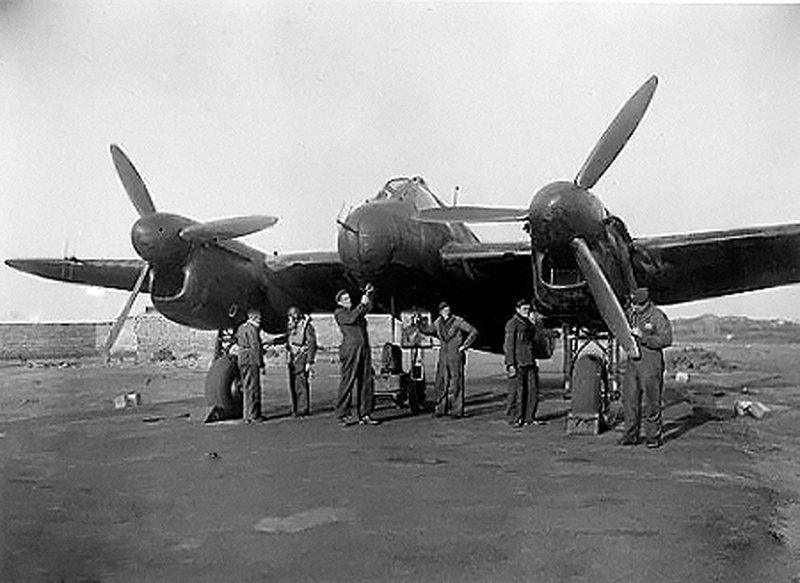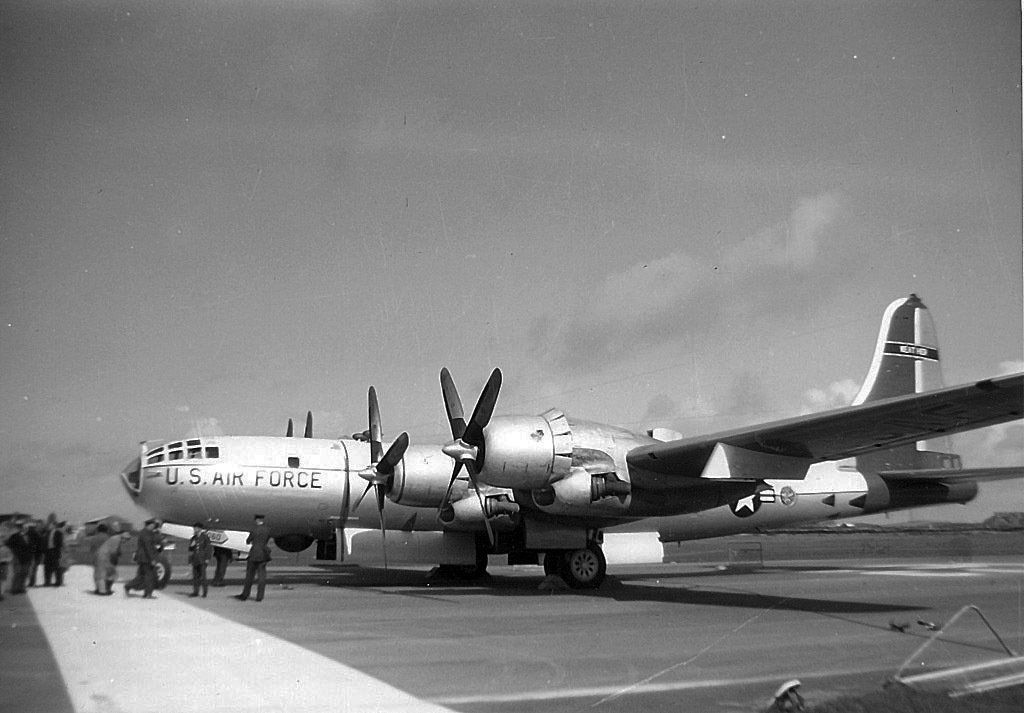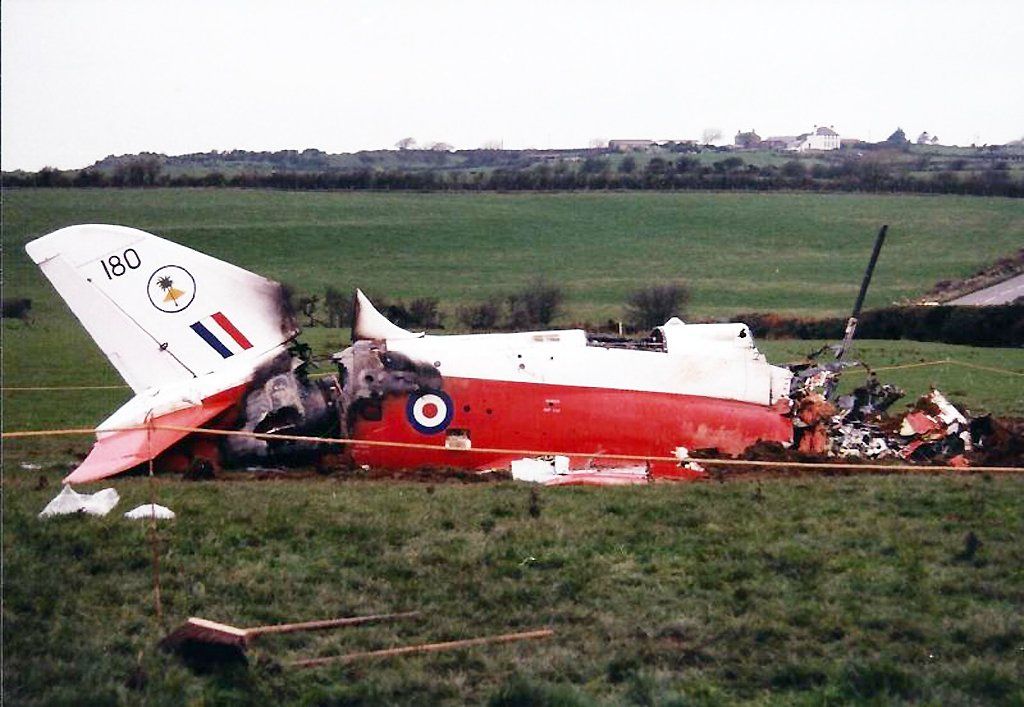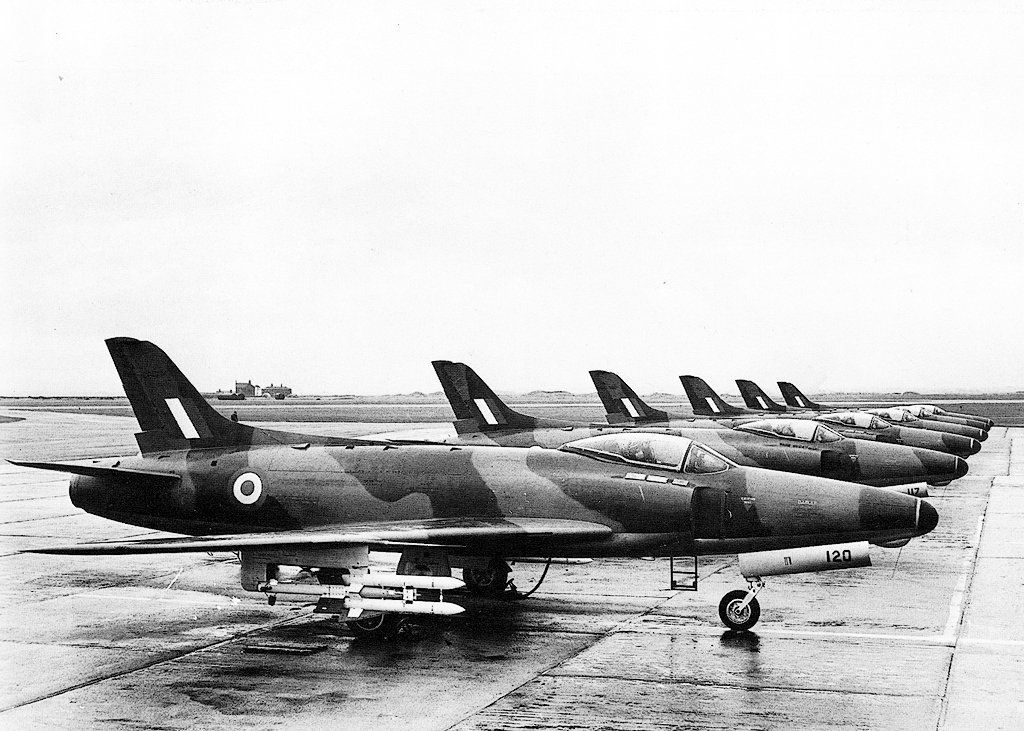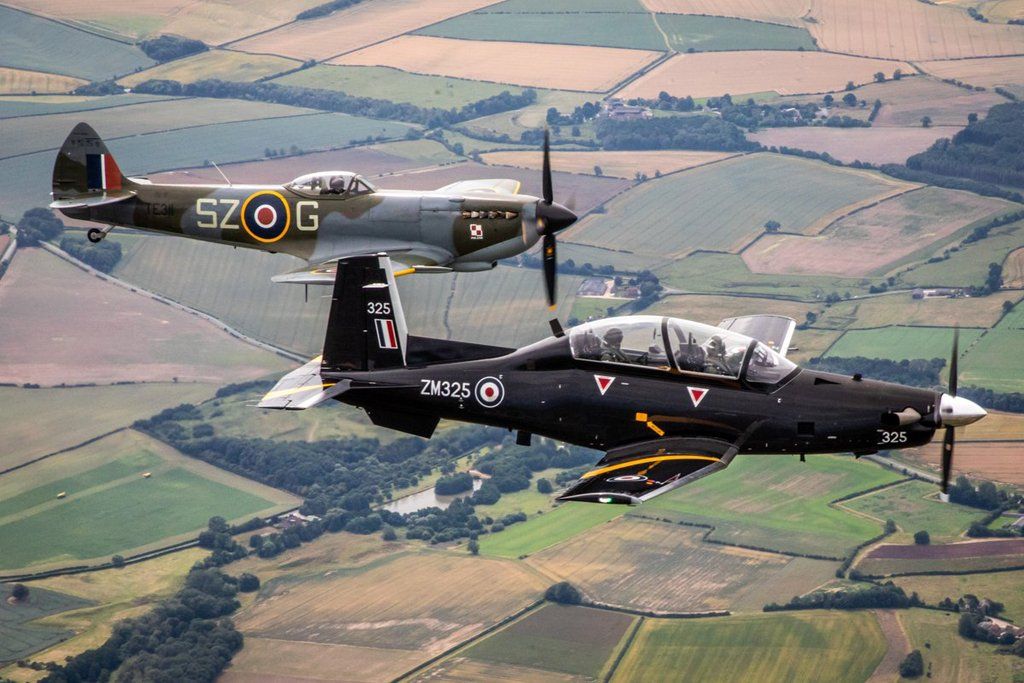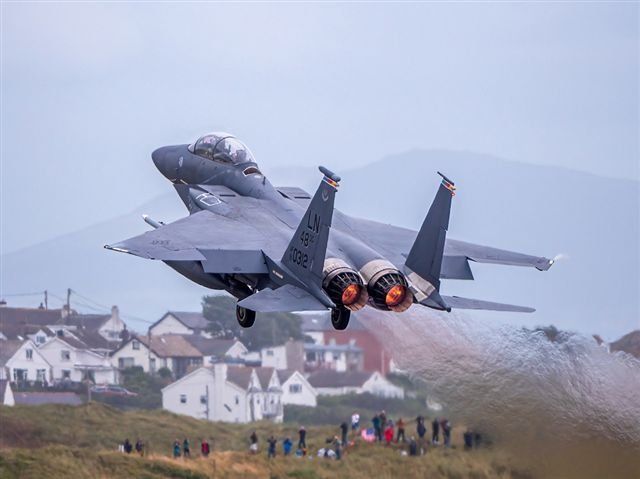THE STATUE OF LIBERTY WING AT RAF LAKENHEATH
Dennis Pritchard • 23 March 2021
THE STATUE OF LIBERTY WING AT RAF LAKENHEATH
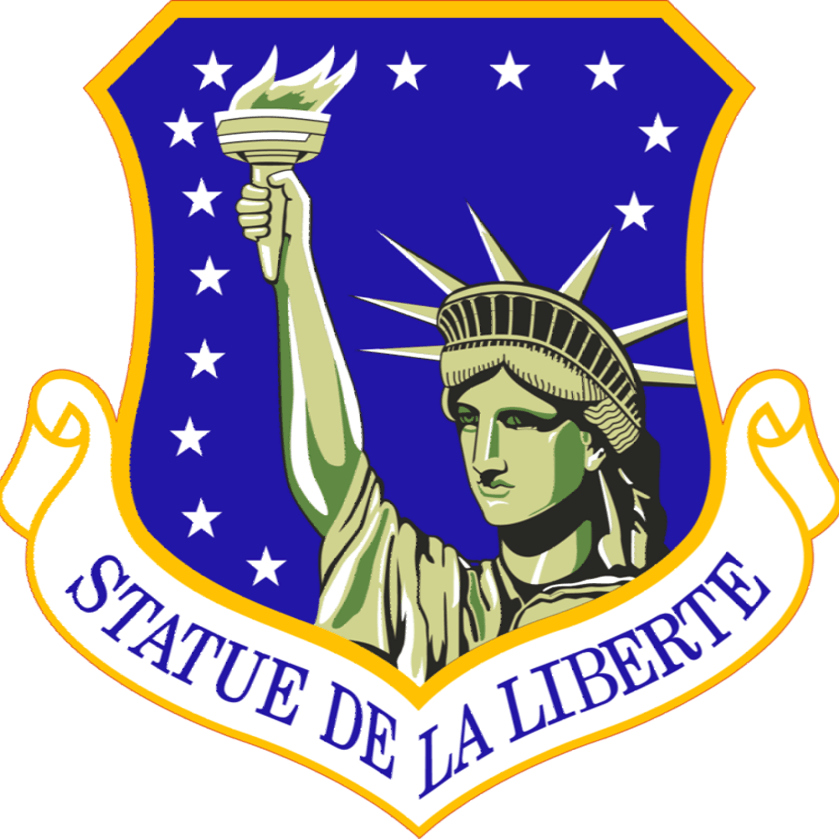
THE STATUE OF LIBERTY WING AT RAF LAKENHEATH
With the 48th Tactical Fighter Wing firmly ensconced in the Suffolk countryside in 1960; the station personnel were to quickly assimilate into the area. One pilot was to remark, “The pubs and local people are really swell and I am slowly learning the language.”
Due to the ongoing conflict in Southeast Asia, the Liberty Wing had to retain the F-100 Super Sabre for longer than had been anticipated; as replacements were urgently being dispatched in support of the Vietnam War. Following Tech Order TO1.1.4, all combat aircraft in that theatre of operations were to be painted in a camouflage scheme of tan and two shades of green, together with light grey under surfaces. By early 1966, the process was expanded to include all USAF tactical aircraft, which would eventually include the 48th TFW. Consequently, as the F-100s rotated through their overhauls, the distinctive squadron and wing marked silver painted aircraft were to be replaced by this rather drab colour scheme, which would also include miniaturised star and bars. Initially, the only unit identity carried was to be individual squadron codes, which were applied to the fin, thus: 492nd LR, 493rd LS and 494th LT. Later, the wing and relative squadron badge would be added on either side of the fin, above the code.
The Super Sabres would have to soldier on until 7 January 1972, before the first F-4D Phantom arrived at RAF Lakenheath, flown by the Wing Commander. Initially only 26 aircraft would be received and so it was agreed to temporarily de-activate the 494th Tactical Fighter Squadron on 26 January 1973. The squadron was not to resume operations until 10 June 1974, by which time the 48th TFW had received 73 Phantoms. The last three F-100s had departed on 14 April 1972. This was to result in the F-4 becoming the mainstay of USAFE’s aircraft inventory, which would comprise 21 squadrons organised through six tactical fighter wings, two tactical reconnaissance wings plus an independent air defence squadron based in Holland.
Squadron tail codes were first applied similarly to those found on the Super Sabres. However, commencing on 1 April 1972, USAF was to adopt wing level maintenance procedures. As a result, only the respective wing identity was to be carried. The 48th was first allocated the code LK. However, it was soon realised that the C-130s of the 314th Tactical Airlift Wing at Little Rock AFB, Arkansas was already carrying this code, thus the 48th was to receive its now familiar code of LN. The new procedure was to dispense with the traditional dedicated crew chief and assistants assigned to specific aircraft, which had been the custom since the early days of the Air Corps. All aircraft were pooled at the wing maintenance level with the individual squadrons being only organised on a personnel level. However, the 48th did attempt to personalise its F-4s by adopting a blue, yellow and red flash at the top of the fin together with the wing badge situated behind the air intake.
FROM PHANTOMS TO AARDVARKS
Following a major NATO air exercise, when severe weather over Europe had grounded all combat aircraft except for the F-111Es at RAF Upper Heyford, a decision was reached to double the strength of F-111s based in the United Kingdom by November 1976. As a result, it was proposed to move the F-111Fs of the 366th Tactical Fighter Wing at Mountain Home AFB, Idaho to RAF Lakenheath. Code named ΄Ready Switch`, it was to entail transferring the F-111Fs over to the 48th TFW, while moving the 474th TFW F-111As from Nellis AFB, Nevada to the 366th TFW and for the Lakenheath Phantoms to move to Nellis. F-4D flying operations with the 48th TFW was to terminate of 28 February 1977. Soon after, the first batch of aircraft was to depart for their new home on 10 March, while the final group had left Lakenheath by 22 April. It had been proposed for the basic manpower structure to remain at the base, where they would commence re-training in anticipation of receiving the F-111. On 1 March 1977, an initial three aircraft was to arrive, led by Colonel Robert E Messerli, who was to assume command on 17th June. In the meantime, the aircraft had been relegated to the hangars for hands on training.
On 1 June, another sixteen F-111Fs arrived in four cells, led by Colonel Jerry W Tiege, Deputy Commander for Operations, flying direct from Mountain Home AFB in 10 hours 20 minutes, followed by another batch on 1 July. On the many ΄incursions` to the Officers’ Club in those days, the author is reminded of a conversation at the bar with Colonel Tiege. He was to relate, that an impressive selection of British guests and dignitaries had assembled to view the first arrivals, including the Supreme Commander in Europe and the British Minister of Defence. As the colonel approached the runway threshold, he could not help but notice a crowd of spotters at the perimeter fence. After the four aircraft had landed, he decided to lead his F-111s around the far side of the airfield in order to show the new mounts to the uninvited guests. As he was to remark, they were obviously more interested and appreciative! ´Ready Switch` had taken almost twelve months to complete. The 492nd TFS Panthers was to become the first squadron to be organised, followed by the 493rd TFS, Roosters and finally the 494th TFS, Bolars. As virtually all F-111Fs were to be assigned to the 48th; the 495th TFS was resurrected as a training squadron and was suitably dubbed the Aardvark University. The aircrew had adopted the name Aardvark for the F-111 due to the aircraft’s long nose. (Ironically, the name was not to be officially adopted until the aircraft had been withdrawn from USAF service.)
The F model was to be the most powerful and capable variant of the F-111, with its pair of TF30-P-100 up-rated turbofans being capable of developing 52,000 lbs of thrust as compared to the 37,000 lbs of their 20th TFW F-111E cousins at RAF Upper Heyford. Maximum take off weight could be as much as 100,000 lbs, incorporating a weapons load of 9 tons. The F-111 when conceived in the early sixties was designed to bend the envelope with a host of innovative new features. Its variable geometry wing, afterburning turbofan engines, crew escape module and terrain following radar was to permit the aircraft to operate at both high and low altitudes, together with superior range and speed. Its ignominious introduction into service had however given the aircraft a bad reputation, but by the end of the war in Vietnam, the F-111 had been totally vindicated and had developed into a very potent weapons system, which the Soviet Union was to view with some alarm. Thus the 48th primary mission was to conduct deep interdiction attacks into enemy territory, in any weather, day or night.
Intense flying training was to commence throughout the United Kingdom and beyond. The aircraft were soon to become a familiar sight over North Wales and at RAF Valley, while usually en route to the bombing range at Jurby in the Isle of Man. However, by virtue of its size, speed and low level capability, complaints from the rural communities were to progressively escalate. At the time, many of the F-111 aircrews were to inform the author, that while they were admittedly responsible for some of the reported incidents, they also suspected that many of those complaints should have been directed to their neighbours at RAF Honington and its Buccaneers. However, the RAF was quite happy to allow the F-111 to take the blame and liability, permitting the media and the public to accuse the aircraft of virtually all low flying violations. In fact, at the time, many local farmers had admitted to the author, that they soon realised that it was far easier to claim compensation by accusing the F-111s for any resulting damage, as apparently the U. S. authorities were more responsive and co-operative, even when those same farmers knew that the aircraft in question, in fact belonged to the RAF!
This intense low level flying training was to eventually take its toll. On 4 October 1977, the Wing was to experience its first loss, when 73-0718 crashed near Ramstein AB, West Germany while on a NATO exercise. As a result of a bombing range abort, the crew had executed a 180º turn and experienced an accelerated stall, resulting in the aircraft hitting the ground, killing both crew members. On 13 December, 1979, 73-0715 was to be involved in a bizarre experience, when a wheel fell off during a take off from Lakenheath. After having dumped excess fuel, it was decided that the aircraft should attempt a landing back at its base after the runway had been foamed for an arrestor landing. The Supervisor of Flying was to inform the crew that they had unfortunately missed the cable. The pilot therefore decided to spool up the engines in order to get airborne again. However, the F-111 had in fact caught the cable, resulting in the aircraft coming back down with a thump! Although the crew escaped without any serious injury, the aircraft was substantially damaged. After languishing in a hangar for many months, it was eventually shipped by a C-5 Galaxy to the Air Logistics Centre at Sacramento, California on 22 April 1980, where it was repaired and was eventually to return to Lakenheath in August 1985.
In January 1981, the 48th F models were to receive further advanced capability with the installation of Pave Tack. This device was essentially a 13.5 feet, 1227 lbs target and laser acquisition retractable pod fitted in the bomb bay, which was to allow superior navigation and precise targeting at a range of up to 12 miles with extraordinary detail. Bomb tossing was to become virtually automatic as the laser guided bombs were launched under its guidance. Further configuration with the addition of a Data Link pod would also allow the crew to literally communicate with the bombs on their trajectory to the target. At the time, these combined features were to permit the F-111Fs to be the only aircraft capable of independently launching laser, infra red and TV guided weapons with remarkable precision.
Early in 1986, the Liberty Wing’s F-111Fs and their unique capabilities were selected to begin planning for a possible counter terrorist attack, code named Prime Pump. Although no country or target was specified, various scenarios had been considered. This was in response to the death of 200 U S Marines in Beirut in 1983, followed by subsequent incidents, which had included grenade attacks at Rome Airport on 17 December, 1985. On 3 April, 1986, three Americans were killed in the bombing of a TWA airliner, soon followed two days later by an attack on the La Belle Disco, Berlin which was frequented by U S servicemen. For some time, the prime suspected sponsors considered had been Libya and this was further confirmed following evidence retrieved from the Berlin bombing. As a result, the U S Administration decided on retaliatory action after consultation and eventual agreement by the Thatcher government.
Essentially, 18 Lakenheath F-111Fs were to attack using massive in flight refuelling by 17 KC-10s and 13 KC-135s operating from RAF Fairford and RAF Mildenhall. This was due to the non co-operation of some allied countries and in particular France and Spain, which was to force the bombers to fly in international airspace via the Bay of Biscay and enter the Mediterranean through the Straits of Gibraltar, which would entail offloading 7 million pounds of fuel. Code named El Dorado Canyon, the raid was launched on the evening of 14 April 1986, comprising 24 F-111Fs (6 spare) and 6 EF-111As (3 spare) from Upper Heyford for electronic jamming support. 9 aircraft led by 70-2390 were to attack the Azzizyah Barracks in Tripoli, 6 to hit the airport, while 3 others bombed a terrorist training camp at Sidi Balal. The raid was to be concluded as having been of limited success, due to various aborts and technical problems, together with the strict rules of engagement, resulting in only a fraction of the force achieving their mission targets. Unfortunately, one aircraft, 70-2389 call sign Karma 52 was hit by ground fire resulting in the damaged F-111 eventually crashing into the sea with the loss of both 495th TFS crew men, Major Fernando Ribas Domminici and Captain Paul Lorence. Another F-111 had to divert to NAS Rota, Spain resulting in only 22 aircraft returning to Lakenheath on the morning of 15 April, some having flown a distance of 5,600 miles and been airborne for over 14 hours.
Due to the fear of reprisals, the names of the crews were never been divulged, although it is understood that various decorations were subsequently awarded, including the Navy Meritorious Citation to the 48th TFW. However, despite the crews having not been identified, the participating F-111s were later observed with the North Africa Campaign Ribbon of World War II emblazoned on their fins, which were to be retained until the aircraft were retired.
With the breaching of the Berlin Wall; in a supreme gesture of people power advocating political change in November 1989 and the demise of the Soviet Union, the Cold War was to eventually come to an anticlimactic conclusion. It very soon appeared that the services of the 48th TFW were no longer perceived as being essential. Soon, apprehension was to develop as the fear of base closures, together with a reduction in military budgets was to become a topic of much debate. However, the situation in the Gulf was soon to overtake such anxieties. On 9 August 1990, the decision to begin Desert Shield was invoked to potentially protect Saudi Arabia, following the invasion of Kuwait by Iraqi forces. The first USAFE unit to deploy was to be the Liberty Wing, with an initial 18 F-111Fs. The first wave was led by the commander, Colonel Tom Lennon flying 70-2390 non stop to Taif AB, Saudi Arabia with KC-135 support, comprising crews from the 492nd and 494th TFS; followed on 25 September by a second group of 14 aircraft from the 493rd TFS.
On 16 October, 74-0813 was to crash in southern Saudi Arabia while engaged on a night time low level training flight on the Askr bombing range, killing the 493rd TFS crew. Despite this tragic loss, the crews continued to undertake an intense training programme, concentrating on night interdictions using the F-111F’s unique capability with its precision weapons. United Nations deliberations were to conclude with a requirement for Iraq to withdraw from Kuwait on a deadline that was to expire on 15 January 1991. On that evening, Coalition Forces were to execute Desert Storm. During the early hours of 17 January, the Wing was to launch 53 aircraft to attack airfields in conjunction with RAF Tornados. The targets were to be the hardened shelters that were suspected of housing Scud missiles. Due to the strength of the Iraqi defences, the missions had to be conducted at 200 feet by individual aircraft that were also targeted against suspected chemical weapons storage bunkers. No aircraft were lost, although one was hit in the Pave Tack pod, whilst another had its canopy grazed. On the following evening, 35 F-111s attacked various targets, including Saddham Hussein’s summer palace, which housed a command and control centre.
By the following day, a total of 67 F-111s had arrived (including one as a replacement for a damaged aircraft that had collided with a KC-135 during a night refuelling). The aircraft and personnel were formed onto a wartime footing into units and were to adopt the following names. The 492nd became Justice, 493rd Freedom, 494th Liberty and the 495th as Independence. Back at Lakenheath, the base had virtually closed down as about 100 crews had relocated to Taif, with no more than four F-111s remaining at the home station.
Initially, the air defences were to be quite active with scores of air to air missiles being reported as being fired by defending fighters, but with the F-111s’ superior speed and low level ability, they were to successfully avoid all attacks. After a few days, the Iraqi’s command and control was virtually eliminated by the Coalition air forces and the threat of both SAMs and fighters had greatly diminished. Tactics were therefore changed, allowing the F-111s to operate between 12,000 and 20,000 feet, where they were relatively safe from ground fire.
Bridges were then placed on the target list, followed by tanks and armoured vehicles using the laser guided bombs. On 25 January, the Iraqis began disgorging millions of gallons of crude oil into the Persian Gulf, thus posing a threat to the local environment. The 48th were thus tasked with destroying the manifold pumps of the pumping stations without damaging the Kuwaiti refinery. The area was heavily defended and close to a residential area. On the following night, flying at supersonic speed over the sea at 20,000 feet, two GBU-15 glide bombs were launched from 20 miles, while another aircraft flying 50 miles out at sea was to guide the weapons onto the target. Both bombs were to hit their target without causing any collateral damage, thus ceasing the flow of oil. On the last night of the war on 27 February, two 493rd TFS aircraft destroyed a 100 feet deep underground command centre bear Baghdad using 4,700 lb GBU-28 Bunker Buster bombs.
During the hostilities, the Wing had flown 2,417 sorties in 9,381 hours at an average of 50 missions per night without losing an aircraft. The impressive tally was to comprise 2,203 confirmed hits on 245 hardened shelters (with 141 aircraft in them), 920 tanks and armoured vehicles, 111 bunkers and 160 bridges. This precise record was easily confirmed due to the unique Pave Tack video permitting immediate bomb damage assessment as was to be witnessed by millions of TV viewers across the world.
The commander had personally led 50 missions himself and Colonel Lennon was a very proud man when on 1 March, he flew ΄Miss Liberty` 72-1448 back to Lakenheath, leading 18 F-111s. This was soon followed by another 30, leaving some 493rd jets to remain at Taif AB until 10 May. This was due to Saddham Hussein directing his efforts against the Kurds in the north of the country. In an UN operation entitled Provide Comfort another 11 aircraft from the 494th were deployed to Incirlik AB, Turkey on 25 September, where they remained until 2 October 1992, when the aircraft were transferred to the 27th Tactical Fighter Wing at Cannon AFB, New Mexico.
THE EAGLES ARE COMING!
Throughout 1991, rumours had been circulating that the 48th Fighter Wing was to become the recipient of the F-15E Strike Eagle. However, many crews, including senior officers were to feel that the F-15E was not a fitting replacement. This was due to an opinion that no other strike aircraft possessed such unique all weather and night attack capability, let alone the mission endurance of the F-111F. However, despite these muted protestations, the authorities, endorsed by Congress had concluded that further enhancement of the F-111 fleet would have been too costly, bearing in mind that many airframes had over 6,000 hours of intense low level flying on them. More significant was the fact that along with other military organisations, the U. S. Air Force was firmly caught in the process of downsizing together with base closures. As a result, the 495th TFS was to cease operations and was accordingly deactivated on 15 December 1991 with the first 8 F-111s flying out to Cannon AFB in order to replace the 27th Fighter Wing’s less capable F-111D.
On 21 February 1992, the first F-15E arrived direct from the McDonnell Douglas factory via Bitburg AB flown by Colonel Mike Guth and be allocated to the 492nd TFS, which was to commence conversion on 20 April, soon followed by the 494th TFS. However, on 1 June 1992, Tactical Air Command and Strategic Air Command had been integrated into Air Combat Command. As a result, Tactical Fighter Wings were re-designated as simply Fighter Wings, together with their constituent Fighter Squadrons, including the Liberty Wing. Similarly, the practice of allocating aircraft to the squadrons with individual crew chiefs was resurrected. On 14 December 1992, the 493rd was disbanded with the last \f-111F departing Lakenheath on 18 December.
During its tenure with the 48th, 98 F-111Fs were to have seen service at Lakenheath, resulting in the loss of 17 aircraft and the consequent death of 16 crew members. Whilst coping with the transition from the F-111F to the F-15E, the Wing was also faced with a radically changing NATO. As already mentioned, deployments to Incirlik AB under Provide Comfort was still continuing, but there was now an increasing prospect of involvement in the Balkans. USAFE had always been focused on the Soviet Union and the possible invasion of Western Europe. Now NATO was reaffirming its role to be more mobile and expeditionary.
Initially, there was only 48 F-15Es to be based, with the 492nd and 494th FS, which had a complement of 24 aircraft each. Early crew complements were to include seasoned veterans from the 4th Fighter Wing at Seymour Johnson AFB, North Carolina who had experience on the F-15E during the Gulf War, together with pure air superiority pilots from the F-15A/C fraternity. But the bulk of the crews were to transition directly from the F-111 after completion of a four month course at Luke AFB, Arizona.
Despite some teething problems, the Wing was soon achieving 50% more sorties per month with the F-15E than had been completed with the F-111F. Crews were therefore to readily admit, including the most pessimistic, that the F-15E was indeed a quantum leap in overall capability and proudly recognised as the most sophisticated combat aircraft in existence. This was due to the ability to combine its air to air superiority role of the single seat F-15C together and an avionics package; which employed the latest in air to ground precision guided weaponry using the LANTIRN (Low Altitude Navigation and Targeting Infrared for Night) pod and being able to carry up to 24,250 lbs of tactical weapons, as well as air to air missiles and a 20 mm Vulcan cannon.
Instability in the former Yugoslavia, with the resurrection of old differences that had been suppressed by President Tito, began to cause international concern. With a total collapse of the country in 1991 and the continuing difficulty in supporting independence in Bosnia Herzogovina, the United Nations through the services of NATO felt obliged in supporting the various factions, including the Croats, Serbs and Muslims. After many peace initiatives had failed, NATO was to set up Operation Deny Flight in an attempt to ban Serbian military over flights and air attacks in Bosnia starting on 12 April 1993.
In the meantime, on 15 November 1993, a pair of F-15Cs arrived at Lakenheath from Bitburg AB, Germany in anticipation of the base’s closure. These were to be the first of 20 Eagles, including a twin seat D model. The original intention had been to transfer the 22nd Fighter Squadron in its entirety from the German base; but it was soon decided to formally reactivate the 493rd FS on 1 January 1994; thus resurrecting its historical association with the Liberty Wing. Dubbed the Grim Reapers, the squadron was allocated yellow/black fin tips as distinct to the blue and red colours, respectively for the 492nd and 494th Fighter Squadrons.
Meanwhile, the situation in Bosnia was still steadily deteriorating even further, with many hundreds of flight violations being conducted by the Serbian Air Force. In February 1994, further reinforcements were sent, including eight 48th FW F-15Es to Aviano AB, Italy. Here, they were to join other aircraft in patrolling the No Fly Zone, and when needed, to support the UN Protection Forces with close air support. In June, the 493rd FS were to receive the highly updated MSIP II F-15Cs, equipped with APG-70 radar and the -220 engine, which had been transferred from the 59th FS at Eglin AFB, Florida.
In November, as part of the multi-national strike to end the Serbian air attacks, the Liberty Wing’s Strike Eagles bombed Ubdina airfield in Croatia and a SAM site near Bihac, which had been posing a threat to NATO aircraft. By the summer of 1995, Serb aggression was still increasing despite token attempts to prevent them, culminating in a USAF F-16 being shot down. By July, NATO decided to end the conflict in Bosnia, once and for all with a sustained campaign called Operation Deliberate Force, which was conducted throughout August and September. As a result, in November, the Dayton Accords were signed and an uneasy peace was to eventually come to the Balkans.
On 14 May 1996, F-111F 70-2390 took off from its Cannon AFB home for the USAF Museum at Wright Patterson AFB, Ohio. The 27th FW was finally relinquishing its Aardvarks in favour of the F-16. However, the F-111 was painted as the 48th FW’s Flagship, having been the aircraft that had led Eldorado Canyon and had also been the first F-111 to land at Taif, during the Gulf War. Using call sign Karma 52, in respect to the crew that had lost their lives during the Libyan mission, it now reposes at the museum as a lasting and fitting tribute to the F-111F with the Liberty Wing.
In June 1996, the 492nd and the 494th FS were each to receive an additional pair of Strike Eagles, bringing their numbers up to 26 aircraft per squadron. In addition, the 493rd FS received an additional six F-16Cs plus an extra F-15D during November and December. On 12 June 1998, the Grim Reapers were presented with the Hughes Trophy for the year’s most outstanding fighter squadron in the U S Air Force. A few days later, on 16 June, 494th FS F-15E 91-0327 developed a serious fire on take off. Although the crew managed to abort the take off, this was to result in the runway being severely damaged and Lakenheath having to be shut down for three days. Problems with the up-rated Pratt and Whitney F100-PW-229 had persisted throughout early 1998; the 48th having suffered more than any other operator with about 30% of its aircraft being out of service due to compressor stalls, blade corrosion and fuel line cracks. However, consideration to replace the engine with the new generation F110-129 engine was to receive a mixed response.
In the meantime, recurring difficulties in the former Yugoslavia in 1998 due to the Serbs’ obsession with ethnically cleansing the Albanian communities in the southern province of Kosova, was once again to cause great concern. On 12 October, twelve 493rd F-15Cs were deployed to Cervia AB, Italy as part of the 16th Expeditionary Wing and were to remain until 9 November. Soon after, Operation Desert Fox was to commence, with a brief four day campaign being launched on 16 December with the 48th attacking air defence targets in Iraq. The following January, due to further provocation by the Iraqis, F-15Es assigned to Northern Watch used the AGM-130EC for the first time while operating from Incirlik AB, Turkey.
Operation Allied Force was to commence on 24 March 1999 when the Serbs refused to remove their forces from Kosova. Eleven nations were to participate in the first wave of air strikes attacking Serbian air bases, command and control centres and air defence capabilities. In preparation, the Liberty Wing had sent 26 F-15Es and set up the 494th (Expeditionary) FS at Aviano AB, supplemented by a further six on 27 February. In addition, 10 F-15Cs of the 493rd (Expeditionary) FS at Cervia AB were tasked with providing Combat Air Patrols for the attacking NATO aircraft. On the first night of 24/25 March, NATO fighters claimed three air to air kills. One was attributed to a Dutch F-16A of 322 Squadron, while the other two were destroyed by the 493rd. All kills were confirmed as being Mig 29s. It has been widely reported that one of the Lakenheath pilots was Cesar A ΄Rico` Rodriquez who had been already credited with two kills during Operation Desert Storm when assigned to the 58th FS/33rd FW. The following day, the 493rd was in action again, when F-15Cs 84-0014 and 84-0015, call sign Boomer and Claw intercepted three Mig 29s five miles inside the Bosnian/Serbian border. The Migs had been reported as attempting to either attack an E-8 J-STARS or NATO E-3 AWACS. Two of the Migs were shot down by Capt Jefff Hwang using the AIM-120 AARAAMs, while the other was to escape. Both pilots ejected and it was later suspected that Russian troops had allowed Serbian helicopters to rescue and recover the downed Serbian pilots. Cervia was to eventually host 18 F-15Cs. The 48th FW F-15Es was to be the main precision weapons launchers and saw action over Kosovo and deep inside Serbia. On 30 April, the first Paveway III, a 4,700 lb GBU was used against an underground storage bunker at Pristina AB.
As the principle base for operations was Aviano, the situation was to eventually become untenable, while hosting 180 aircraft and their attendant support personnel and equipment. As a result, it was agreed that further F-15E aircraft from the 492nd FS had to mount their operations direct from Lakenheath; being quite a task bearing in mind the distances involved. Eventually, the Serbian government was to finally capitulate and withdrew all military and police forces from Kosovo. Operation Allied Force was therefore terminated on 20 June 1999.
During the campaign, the 48th Fighter Wing had amassed 2,662 sorties in 11,504 hours. This was to comprise 77 sorties flown direct from Lakenheath, 1,250 by the 494th FS out of Aviano AB and 1,335 sorties by the 493rd FS F-15Cs, whilst based at Cervia AB. Total tonnage of bombs was to be 2,777,877 lbs. Later commenting, Colonel Carl Van Pelt was to state, “We are very proud of our airmen and the wing continues to be the foundation of USAFE combat capability, proving that we have a team that is prepared for operations anywhere, anytime.”
In November, the 48th Fighter Wing was identified as one of ten USAF Aerospace Expeditionary Lead Wings. This entailed the Liberty Wing to hold alert for periods of three months at a time and be ready to deploy world wide, before handing over to the next wing. Little did the previous commander realise how true his words would be, as the 48th Fighter Wing entered the new millennium under the leadership of Colonel Irving L Halter Jr.
The new century was to begin on a very sad note for the 493rd FS. Having lost an F-15C/86-0173 on the Nellis AFB ranges on 8 March 2001, in which the pilot had successfully ejected; the squadron pilots were not to be as fortunate, when on the 26th of the month, another two Eagles were lost. Aircraft 86-0169 and 86-0180 were engaged on a low level exercise over Scotland. Following permission to enter low level, the two Eagles smashed into snow covered Ben Macdui in the Cairngorms, killing Lt Col Kenneth Hyvonen and Capt Kirk Jones.
The same year, the 492nd FS was to receive 16 new build Strike Eagles to replace a similar number of the older models. These F-15Es have global positioning and digital mapping, together with the Pratt and Whitney F100-PW -229 engines each developing a maximum of 29,000 lbs thrust.
Almost immediately after 9/11, with the hijacked airliner attacks on the Twin Towers and the Pentagon, Operation Enduring Freedom was to commence within three weeks. Directed at Al Queda and the Taliban in Afghanistan, sustained missions were mounted against suspected active terrorist training camps and the F-15Es of the 48th FW were soon to become involved. In addition, on 20 March 2003, the second Gulf War commenced, which was to last until 1 May, culminating with the invasion of Iraq. The Strike Eagles were then to continue in support of the ground troops with Operation Iraqi Freedom until its conclusion, while still maintaining its commitment to Enduring Freedom in Afghanistan. Combat missions were to continue with Operation Odyssey Dawn over Libya in 2011. F-15E, 91-0304 was hit by AAA on 22 March and crashed near Benghazi. Fortunately, the two crewmen had ejected and were rescued.
The 493rd TFS was to conduct three month deployments to Lithuania on the Baltic Policing Mission that protects the air space of NATO members Estonia, Latvia and Lithuania. 48th FW squadron deployments of this nature continued, including the F-15Es units supporting Operation Enduring Freedom, the global war on terrorism.
Unfortunately, on June 15, 2019 the 493rd FS was to lose F-15C/ 86-0176 when it crashed into the North Sea, with the loss of its pilot, 1st Lt Kenneth “Kage” Allen.
Despite COVID-19, the Wing still continues to deploy in support of NATO operations, which recently included Operation Astral Knight, when four 493rd FS F-15Cs participated in exercises in the Baltic region. Later, the 492nd FS was to return from participation in ongoing Operation Inherent Resolve, by targeting Islamic State group targets in Iraq and Syria. Recently, on November 2020, 4 jets were to participate in a exercises in Sweden
Rumours had suggested that the 48th FW might be moving out of RAF Lakenheath after 60 years. However, it has now been confirmed that the Liberty Wing is to remain at its Suffolk base, in anticipation of receiving the F-35A. Of note, it has also been reported that the new replacements are going to equip only two squadrons; one of which is to be the 495th FS, which was last seen at Lakenheath in December 1991, before its inactivation.
Aerophile
Photo 1 - Liberty Wing Badge
Photo 2 - Panthers Badge
Photo 3 - Roosters Badge
Photo 4 - Bolars Badge
Photo 5 - Camouflaged 48th TFW F-100D visits RAF Valley in 1966. (Author)
Photo 6 - 492nd TFS/LR F-100D at Lakenheath in 1970. (Author)
Photo 7 - Hangar displayed Hun in 1970. (Author)
Photo 8 - 494th TFS pilots claiming that they had the last Huns in USAFE. (USAF)
Photo 9 - 493 rd TFS F-4D, next to a 493rd jet in 1976. Note the amended European camouflage pattern and wing code LN. (USAF)
Photo 10 - 48th TFW F-111F in 1979. (Author)
Photo 11 - 495th TFS F-111F prepares for Eldorado Canyon mission on 14 April, 1986. (USAF)
Photo 12 - 495th TFS F-111F at RAF Lakenheath in 1991. (Author)
Photo 13 - 494th TFS F-111F at RAE Boscombe Down in 1992. (Author)
Photo 14 - F-111F 494th TFS aircrew. (USAF)
Photo 15 - First batch of F-15Es at Lakenheath, as seen during Exercise Excalibur in 1992. (Author)
Photo 16 - 492nd FS Strike Eagle departing Bagram AB, Afghanistan for another combat support mission. (USAF)
Photo 17 - Blast from the past! P-47D and Spitfire fly over Lakenheath. (USAF)
Photo 18 - Where are the Eagles? (USAF)
Photo 19 - The Grim Reapers had not been forgotten! (USAF)
Photo 20 - Epitomising 28 years of F-15E operations. (USAF)
Photo 21 - Unofficial 495th TFS patch, as devised by the aircrew in 1977. Malaipsa Nova translates as Bad News Itself! (Author)


